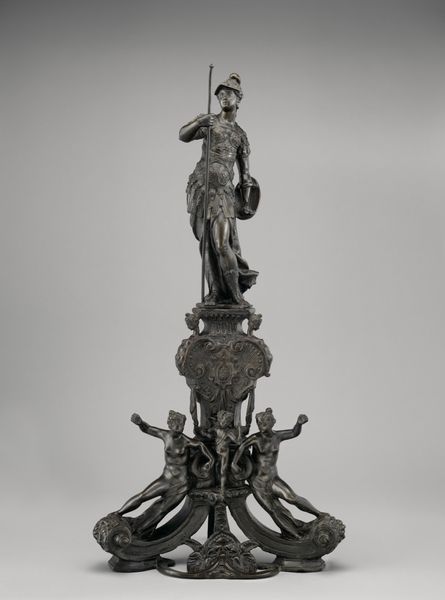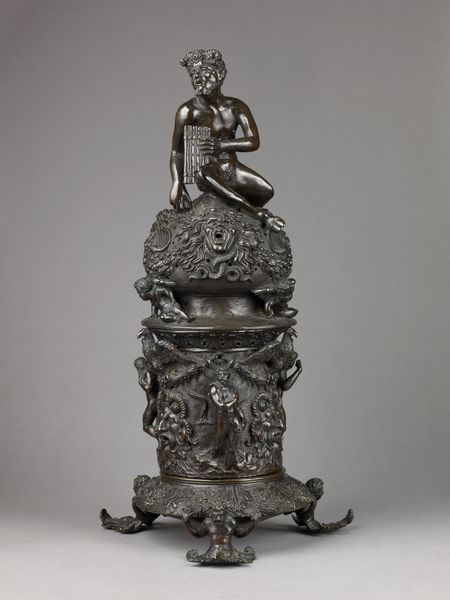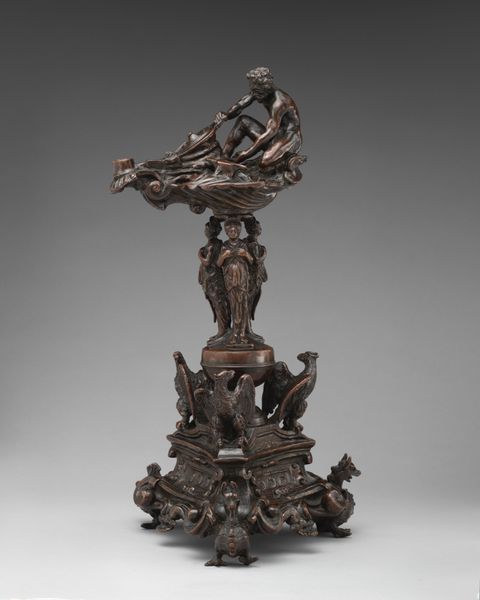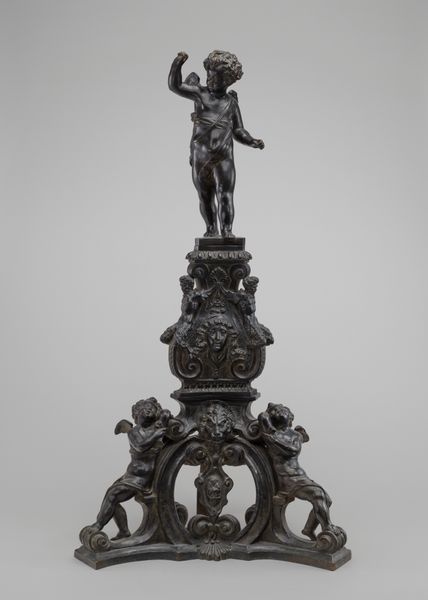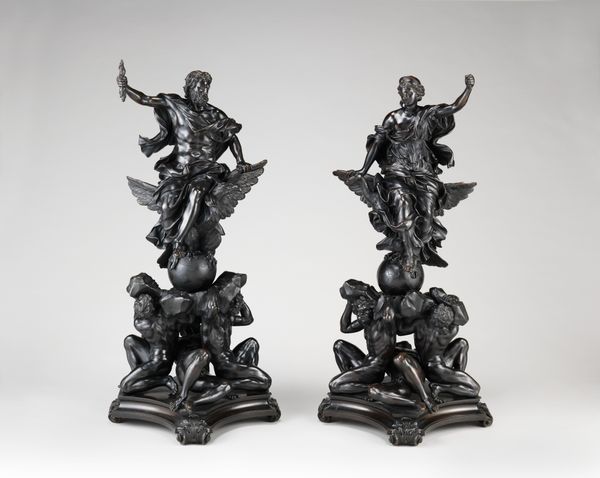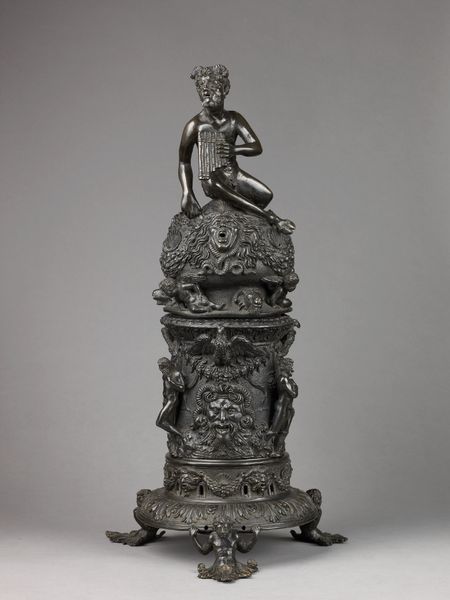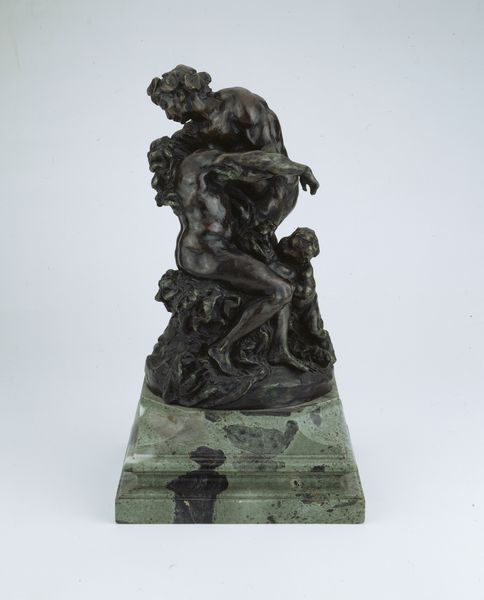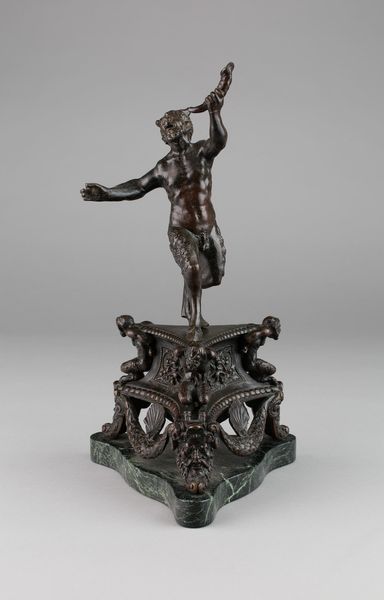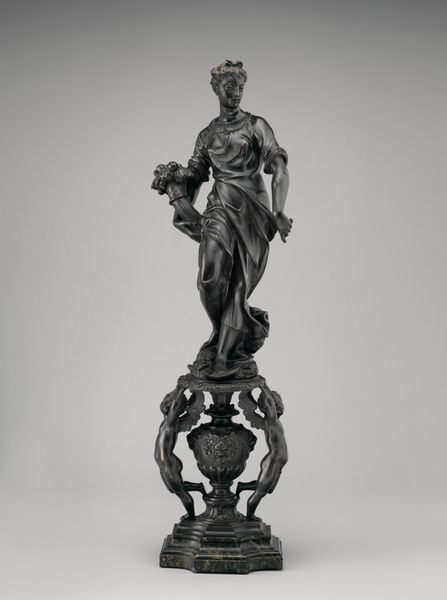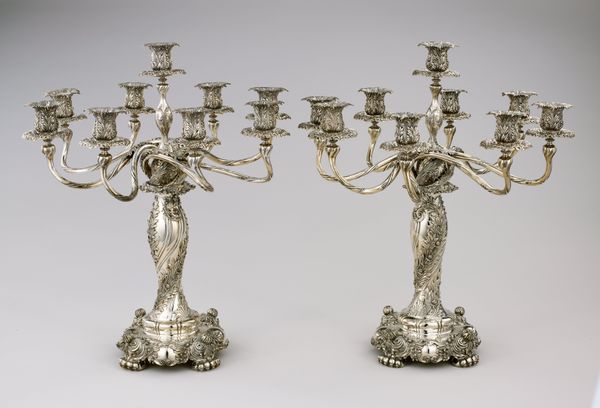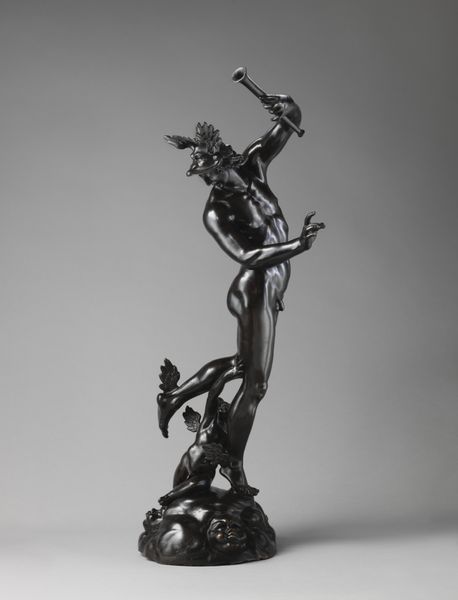
Andiron with figure of Venus (one of a pair) 17th century
0:00
0:00
bronze, sculpture
#
stone
#
sculpture
#
bronze
#
mannerism
#
figuration
#
sculpting
#
sculpture
#
decorative-art
#
nude
Dimensions: Height: 44 1/2 in. (113 cm)
Copyright: Public Domain
Curator: Here we have a pair of bronze andirons created by Girolamo Campagna in the 17th century, now residing at the Metropolitan Museum of Art. These aren’t your average fireplace accessories; they’re elaborate sculptures! Editor: My first thought is that they feel so formal, almost severe despite depicting classical figures and motifs. They seem more imposing than inviting. Curator: Indeed. They are Mannerist in style, which is all about drama and artifice. Andirons like these were status symbols, displayed in the homes of the wealthy. Notice how the figure of Venus surmounts one, a classical nod to beauty and love, while a corresponding male figure graces the other. Editor: Yes, the overt display of classical figures – particularly the nude form of Venus – is hard to overlook. What are they meant to signify when situated in the home? The underlying tones and allusions to the canon feel exclusionary given the decorative function and implied audience. Curator: That's a fascinating point. The classical allusions served to connect the owner to a lineage of power and taste, aligning themselves with the intellectual elite. Owning pieces such as this created conversation. Consider the placement of andirons - prominently flanking the hearth, the heart of the home - this speaks volumes about the family's ambitions and perceived cultural standing. Editor: Placing these idealized, largely inaccessible figures quite literally above us enforces a hierarchy. It echoes the dynamics of power, then and maybe even now, and reinforces notions about who is deemed beautiful, worthy, or even human. Curator: Exactly! Art always reflects and reinforces existing social structures, whether consciously or not. Their display and continued existence in museum spaces makes us complicit in continuing these patterns. Editor: Which challenges us to view them critically. Despite being "decorative," objects like these held immense cultural weight. Today, it's imperative that we engage with the full context of that symbolism rather than blindly celebrate "beauty." Curator: I think you’ve articulated the contradictions of these pieces beautifully. They stand as powerful testaments to a particular moment in history. Editor: A potent, complex moment that deserves thoughtful unpacking and conscious acknowledgement of its many layers.
Comments
No comments
Be the first to comment and join the conversation on the ultimate creative platform.
